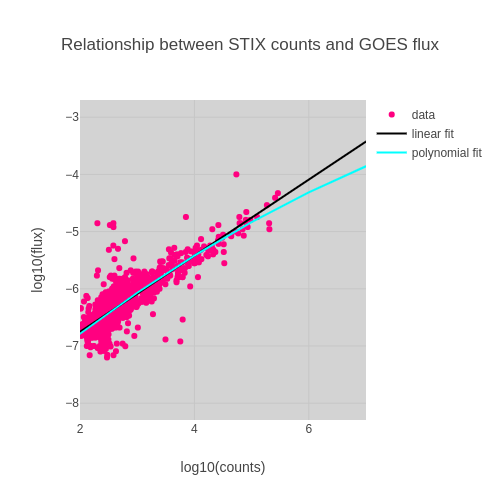Difference between revisions of "GOES Flux vs STIX counts"
| Line 8: | Line 8: | ||
| + | <!-- | ||
| + | The scatter plot can be also fitted with a polynomial function. | ||
| + | --> | ||
[[File:Goes stix flux polynomial.png |400px|thumb|none| A polynomial fit to the data. Occulted flares were excluded. ]] | [[File:Goes stix flux polynomial.png |400px|thumb|none| A polynomial fit to the data. Occulted flares were excluded. ]] | ||
Revision as of 16:11, 20 January 2022
The GOES flux of a solar flare is estimated using
flux=10^(p0+p1*x),
with x=log10(stix_peak_counts*r^2)
where p0, p1 are the parameters from the curve fit, peak_counts is the STIX QL LC peak
counts and r is the distance between the Sun and solar orbiter in units of au.

